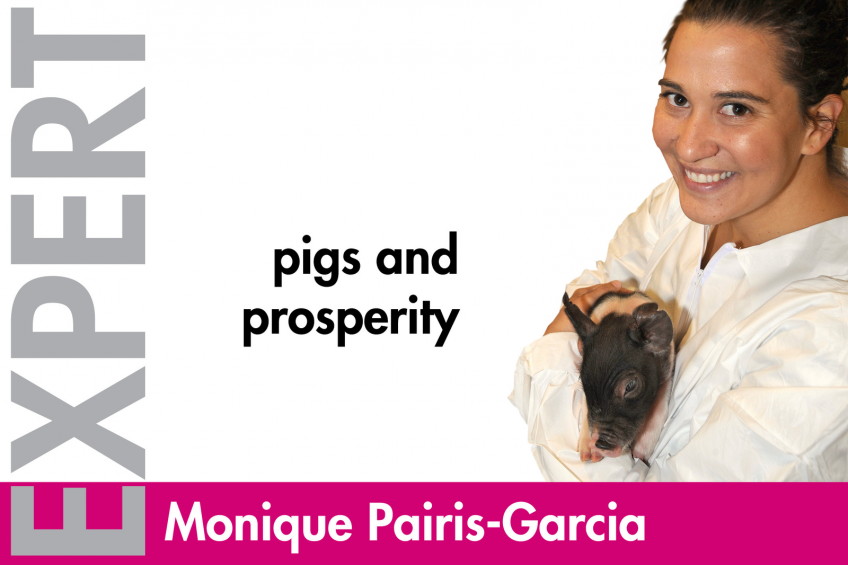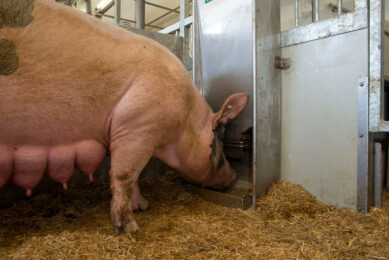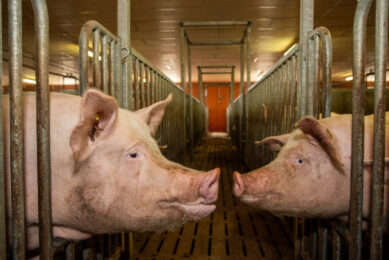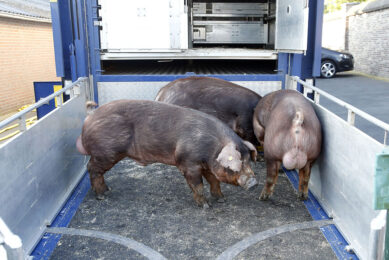Lameness issues among the sow population

On-farm lameness is a recognised concern across the livestock industry with significant economic implications. However, lameness within the swine industry has received little attention. Dr Monique Pairis-Garcia looks at the facts.
EXPERT
Lameness, defined as visual deviation in gait, is a clinical issue on-farm and is widely recognised as a concern in several livestock industries including the dairy and broiler industry.
Lameness in swine gets less attention
Surprisingly, lameness in the swine industry has received very little attention overall. This is not due to the fact that pigs are not lame or that lameness does not have a significant economic impact on the producer. In fact, between 4-18% of all sows demonstrate some degree of lameness on farm.
Lameness: 3rd most common reason for culling
Lameness is the third most common reason for culling sows among US swine herds and approximately 10-15% of parity 1-3 sows are culled due to lameness prior to reaching their economic break-even point. The impact of lameness on-farm is also likely underestimated as lameness plays a significant role in reproductive success and growth rates of sows. Therefore, a sow may be identified to be culled due to poor reproductive performance as a result of an underlying lameness issue that has yet to be diagnosed.
Sows in slatted concrete floors – 4 times higher risk of lameness
There are several factors that play a role in lameness prevalence and severity on-farm. Overall, sows housed on partially slatted or fully slatted concrete floors have four times greater lameness prevalence compared to those housed in deep bedding or outdoors. Within slatted floor systems, additional factors including space between slats, slat edge and surface roughness contribute to the problem. In the United States, approximately 5% of all gestating sows are housed exclusively outdoors with 15-20% of sows provided access to outdoor systems. Therefore, a large population of sows in the United States are at an increased risk for developing lameness issues.
Mitigating lameness on-farm can be a challenge for several reasons:
- there is no one cause of lameness; lameness may be a result of bacterial or viral infection, injury or poor overall genetic conformation.
- lameness is often very difficult to identify, diagnose and treat on-farm and requires caretakers with exceptional skills for identifying lame animals.
Recognising that lameness cannot be eliminated entirely on-farm, much of the recent work has focused on mitigating or managing lameness to make it less severe and decrease overall recovery time for the sow.
Reducing on-farm lameness
The first approach to reducing lameness on-farm is by changing or altering the environment to improve sow comfort. As it is unrealistic to expect all sows to be moved to outdoor systems and current pig production systems have limited ability to utilise bedding due to manure management, other alternatives much be evaluated. Some work, including recent work conducted by Ohio State University is looking into the impact of rubber mats on lameness severity and recovery. Some research has suggested that placement of rubber mats decreases the risk of lameness development and encourages the sows to stand up more frequently and lie down more often. However, the value of using a rubber mat on sows already identified as lame are unclear. Recent results from a study conducted on a commercial sow operation in the United States demonstrated that the presence of a rubber mat in the farrowing stall had no impact on lameness severity or the improvement in recovery time of previously identified lame sows.
Although placement of rubber mats impacts sow behaviour and is beneficial as a means to prevent lameness, much more work is needed to understand how rubber mats can be used for lame populations already identified on-farm. This, in addition to exploring alternatives to improve sow comfort and improve overall productivity and welfare will be key issues for researchers to focus on over the coming years.











